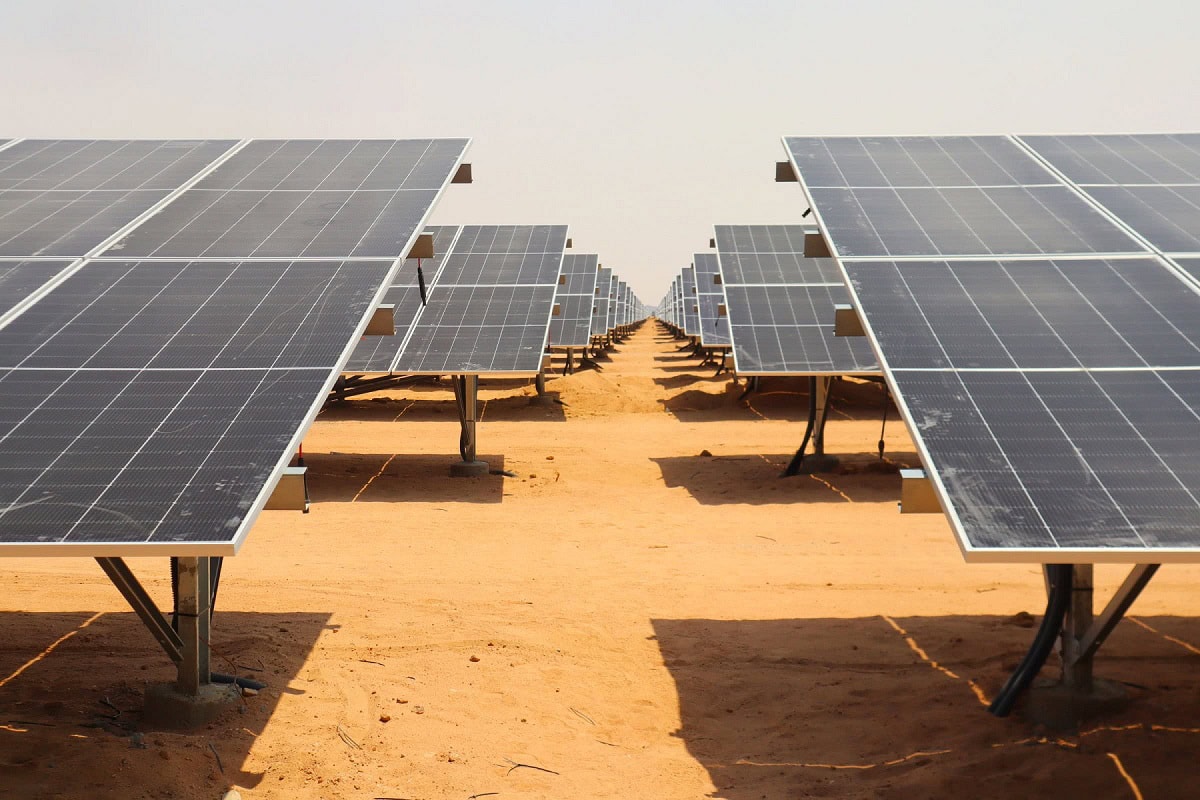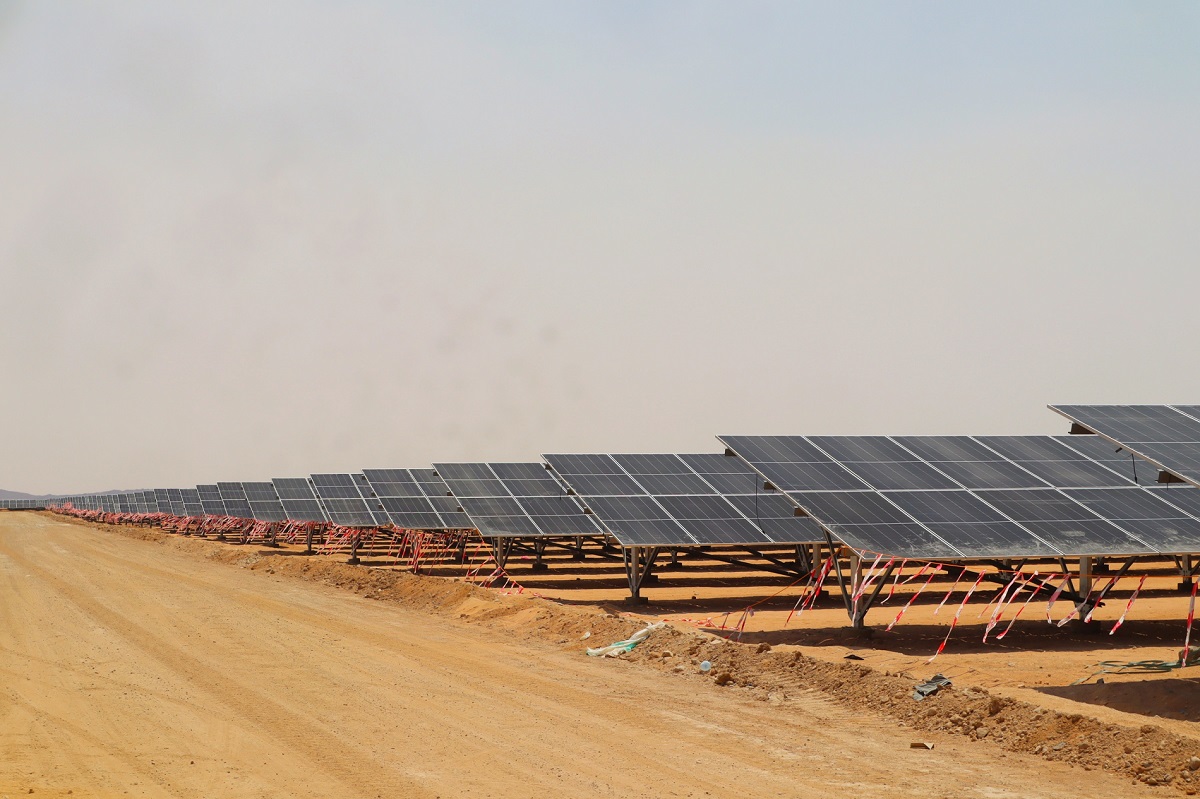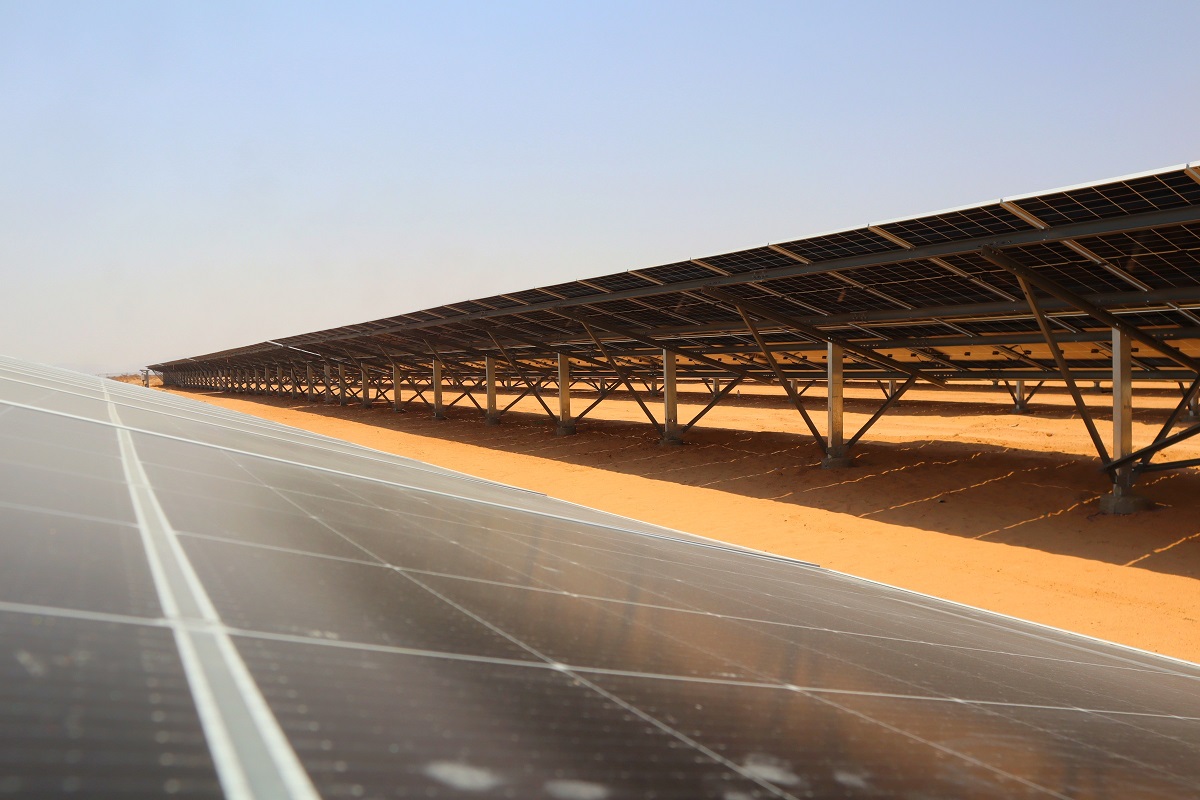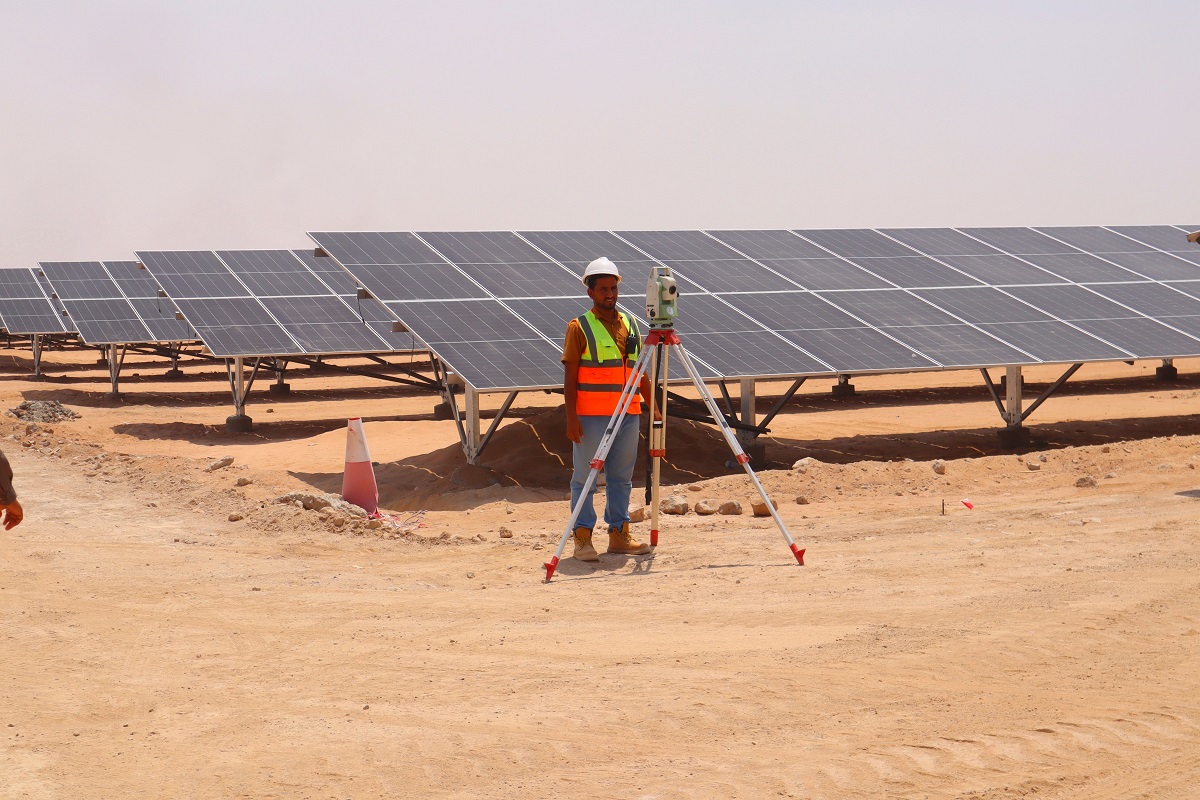
The Shabwa Solar Power Station, June 18, 2025 (South24 Center)
10-07-2025 الساعة 9 صباحاً بتوقيت عدن
|
|
Shabwa Governorate today stands at a critical crossroads, between a long-standing service crisis and a promising development opportunity that could serve as a starting point for gradual energy independence that will transform the governorate.
Abdullah Al-Shadli (South24)
The governorate of Shabwa, in South Yemen, is nearing a long-awaited developmental achievement -- the Solar Power Station project, which is currently in its final stages. This project marks a pivotal step in the governorate's transition toward clean energy and in meeting its electricity needs amidst an unprecedented power crisis over the past years.
Amid the worsening electricity crisis and the state's declining ability to meet the soaring demand, the Solar Power Station project in Shabwa stands out as a strategic initiative. It represents a practical model for sustainable energy-- with its integrated engineering design, its Emirati funding, and its reliance on local authority directives. The significance of this project lies in its alignment with the global transformation in energy systems.
While official statements indicate that nearly 85% of the project has been completed, there is growing anticipation around the expected actual impact once the station becomes operational, especially its ability to reduce the deficit and provide a more sustainable and stable solution for the people in Shabwa.

The Shabwa Solar Energy Station, June 18, 2025 (South24 Center)
The Electricity Situation in Shabwa
Despite its natural wealth and strategic location, Shabwa has long suffered from a deteriorating electricity service, which has negatively affected daily life and economic activities. The electricity system in the governorate relies almost entirely on diesel generators, making it vulnerable to supply fluctuations, high operational costs, and frequent breakdowns.
In an interview with ‘South24 Center’, Engineer Ahmed Abubakr Al-Rabbash, Director of the Power Generation Station in Ataq, explained that the total electricity generation capacity in the governorate currently stands at about 51.5 megawatts, distributed across four main stations. The Ataq station leads with a capacity of 40 megawatts, of which 15 megawatts come from the Public Electricity Corporation and 25 megawatts from purchased power. It is followed by the Bayhan Station with a capacity of 8 megawatts, the Naqoub-Asilan Station with 2.5 megawatts, and finally the Arma Station with only 1 megawatt.
However, these capacities are very limited compared to actual demand. Al-Rabbash noted that the Ataq Station alone, which serves eight districts including the governorate’s capital, needs between 65 and 70 megawatts to meet demand, while it currently provides just 40 megawatts. Similarly, the Bayhan Station requires 10 megawatts and the Naqoub-Asilan Station 3.5 megawatts. Based on these figures, Al-Rabbash estimates the current electricity deficit in the governorate at about 33 megawatts, representing approximately 60% of the total available capacity.
Given this situation, there is a growing need for an alternative and sustainable project that could ease the burden on traditional stations and provide a more stable and cost-effective energy source in the long run. This is where the solar power station project comes in -- as a strategic response to this structural crisis.
Project Details and Technical Components
Launched in May 2024 with Emirati support, the Solar Power Station project represents a significant leap in the electricity infrastructure of the governorate. It is designed to be one of the largest projects of its kind in southern Yemen, after the Aden Solar Station. The project features engineering and technical integration that enhances its operational efficiency and ability to provide stable and effective energy.
The project’s committee told ’South24 Center‘ that the project infrastructure consists of 85,806 solar panels, 159 inverters to convert the current, night-time storage batteries, and six substation transformers. The project also includes a 15-kilometer overhead transmission line supported by 51 metal towers, linking the station to the public grid. This design contributes to minimizing electricity loss and ensures high-efficiency transmission of the generated power.
A field visit by ’South24 Center‘ to the project's site, meeting with the committee and implementers – Watch on Our YouTube Channel:
The Shabwa Solar Power Station Nears Completion
The full production capacity of the solar station is 53 megawatts, which is considered a good capacity in view of the current electricity demand in the governorate. According to project officials, this capacity is sufficient to cover a significant portion of the existing energy deficit, especially during daytime hours when sunlight is at its peak.
In a technical assessment of the project, Engineer Saleh Al-Suleimani, an expert in energy affairs, described the station as "a qualitative turning point and a model to be emulated in Yemen's energy sector”. He explained that the project "goes beyond being just a service solution since it represents a successful practical application that combines large scale, effective technology, and proven feasibility."
Al-Suleimani told ‘South24 Center’ what distinguishes this project is that it is a fully integrated central station equipped with a dedicated transmission line and modern technologies that enhance its operational efficiency, making it superior to many other fragmented or piecemeal energy solutions.
Implementation Stages and Completion Rate
Work on the solar power station in Shabwa is progressing at a rapid pace under close supervision from both the implementing agencies and local authorities, with the project nearing completion. According to Engineer Waleed Ahmed, Director of the consulting company ‘Ufic’ overseeing the project's implementation, the actual completion rate has reached approximately 85%, reflecting significant progress compared to the projected timeline.
On April 27, Abd Rabbuh Hishlah, Secretary-General of the Local Council in Shabwa, launched the critical implementation phase of the project by initiating the installation of the solar panels, marking the actual starting point of the project's technical phase.
Though full implementation was initially scheduled for May 30, the project faced delay due to the late arrival of the transmission towers. Project Manager Maher Al-Muadhin attributed the delay to "reasons beyond the contractor’s control”. Nevertheless, this setback did not derail the overall progress. Al-Muadhin told ‘South24 Center’ that "these difficulties have been overcome, and we are hoping the station will be fully ready by July or August."
Indeed, on Tuesday, June 24, a shipment of electricity transmission towers for the Emirati-funded Solar Power Station project in Shabwa arrived at the Port of Aden.
On the technical side, final preparations are underway ahead of trial operations. Jordanian expert Salah Qurei, the station's operations manager, explained that the technical teams are now carrying out grounding work, which is the final step in the electrical safety system to protect equipment from excess currents or malfunctions. Qurei said: “We are now in the final stages. The station will be ready for operation in less than two months. God willing.”

The Solar Power station in Shabwa – June 18, 2025. (Source: South24 Center)
According to the project supervisors, the station has not faced any major local challenges. Qurei praised the cooperation of Shabwa’s residents with the work crews and the availability of local labor, which helped in speeding up the progress, compared to similar projects in other regions.
Expected Economic and Social Impact
The Solar Power Station in Shabwa is expected to bring a significant transformation to the governorate’s electricity supply, especially during daylight hours. According to Engineer Waleed Ahmed, the project "will cover about 80% of Shabwa governorate’s electricity needs during daylight hours", representing a major relief for thousands of residents who have long suffered from chronic power outages.
The impact of the project is not limited to service provision, and includes an important economic dimension. Waleed Ahmed notes that the station "will reduce the financial deficit caused by fuel consumption for electricity generation”. This means a reduction in reliance on costly fuels such as diesel and less strain on the public budget, particularly amid the absence of sustainable fuel support from the government or international partners.
In addition, the regular availability of electricity will contribute to improving the business and services environment, promote social stability, and reduce the burden on rural and remote residents who have long relied on costly solutions such as private generators.
From a broader perspective, expert Saleh Al-Suleimani believes that “the real importance of the project lies in it being a Proof of Concept”, meaning that its success can inspire both local and international investors to replicate the experience in other Yemeni governorates. He noted “this project proves that large-scale renewable energy projects are possible and feasible in Yemen, despite all challenges.”
In this way, the project goes beyond being just a power generation station, to becoming an economic and strategic driver that boosts confidence in renewable energy projects and opens the door to innovative partnership models between the public and private sector.
Feasibility, Challenges, and Conditions for Success
While the Shabwa Solar Power Station holds promise for improving the electricity situation, energy experts warn of technical and regulatory challenges that may hinder the project from realizing its full potential unless they are addressed seriously.
Engineer Saleh Al-Suleimani considers the project a major success in terms of design and implementation. However, he emphasizes that “generating electricity is only half the equation. The other half lies in the public grid’s capacity to absorb it.” He explained that connecting an intermittent energy source such as solar power to a “dilapidated and unstable” grid could lead to voltage fluctuations, which can negatively impact sensitive equipment within the station and reduce the quality and stability of the service provided to citizens.

The Shabwa Solar Power Station, June 18, 2025 (South24 Center)
For his part, Eng. Ahmed Al-Rabbash stressed that the new station could "meet the governorate’s electricity needs, even if only to a satisfactory level". However, he tied this to two essential conditions. First, the station should operate at its full contracted capacity, and second—and perhaps more importantly—"ensuring the availability of fuel to run the diesel stations in parallel”. He added: “Solar energy doesn’t work alone. There must be concurrent diesel operation to ensure grid stability. Without this integration, we will continue to suffer from power shortages.”
Regarding the possibility of the project becoming a nucleus for a national shift toward renewable energy, Al-Suleimani identified three essential conditions for success:
1. A genuine political will translated into a clear national strategy for renewable energy.
2. A supportive legislative environment that allows the private sector to enter as an investor in the production and sale of electricity, through the Independent Power Producer (IPP) model.
3. Serious investment in upgrading the national grid and training human resources capable of efficiently and sustainably operating and managing this advanced technology.
These observations indicate that despite the project’s high feasibility, it cannot succeed in isolation without a comprehensive reform of the institutional structure of the electricity sector in Yemen, especially in the liberated governorates that suffer from lack of funding and the absence of clear national energy plans.
Sustainability and Community Protection
With the Solar Power Station in Shabwa nearing operation, discussions are intensifying about the project’s ability to maintain high efficiency amid the environmental, administrative, and security challenges facing infrastructure projects in Yemen. Engineer Saleh Al-Suleimani believes that the biggest challenge is not launching the project but ensuring its continuity. He warned that “the silent enemy threatening the sustainability of this achievement is the culture of neglect and the absence of periodic maintenance plans.”
He explained that solar panels, despite their long lifespan, can lose efficiency quickly if dust accumulates on them. He noted that “electronic systems require regular preventive maintenance, and without a dedicated budget and a clear plan, the station’s performance could gradually deteriorate until it stops completely.” This warning is especially important in a desert environment like Shabwa, where weather conditions could directly affect the station’s technical infrastructure.
Al-Suleimani also highlighted the security risks facing the project, particularly the exposed infrastructure such as power transmission towers. He pointed that “these towers could be subjected to tribal sabotage or social pressure on the local authorities, which could completely paralyze the station if a comprehensive protection plan is not implemented”.
To overcome these challenges, Al-Suleimani proposed what he called “a true partnership between the authorities and the community”. He called for the establishment of a sustainability fund financed from the savings the project would generate by reducing fuel use. This fund could be allocated exclusively for the maintenance and operation of the station, without relying on unstable governmental budgets. He also stressed the need for a participatory security plan involving local communities in protecting transmission lines and the surrounding facilities.
He added: “Citizens must feel that this station belongs to them. This awareness, coupled with accountability and oversight, is the strongest shield to ensure that this dream doesn’t turn into a mirage a few years after it comes into service.”
In light of these recommendations, it appears that the project’s success goes beyond its technical implementation, and requires a shift in institutional and societal culture toward a sustainable, participatory model, in which citizens become part of the solution, and not merely recipients of services.
Accordingly, the Shabwa Station is not just a power plant but a strategic opportunity to rebuild public trust in large-scale projects and to develop a model that can be replicated in other governorates suffering from service neglect. With the project entering its final phase, responsibility now lies with local authorities, relevant ministries, and civil society to ensure that this experience is not just a temporary exception, but a foundation for a long-term transformation toward sustainable energy security and genuine developmental sovereignty.